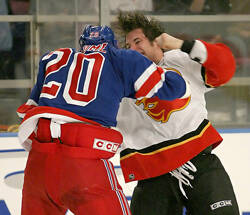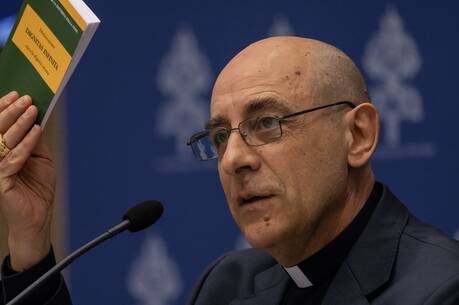Much of the poignancy of A. E. Housman’s poem “To an Athlete Dying Young” lies in the paradox of the tragedy. In classical art the athlete took on god-like dimensions. The “Discobolus” of Myron, for example, suggests not just human perfection but a hint that the discus thrower will live forever. It is the challenge to this illusion of immortality that brings the crowd to silence when the tackled quarterback lies still and is then hustled off the field on a stretcher, or when the heart of the college basketball player suddenly stops in mid-court and he topples to the floor.
Critics have warned against football violence since the 1890s. In 1905, 18 players died on the field. In recent months Americans have been forced to pay more attention to the physical and moral consequences of violent sports, especially given the increased incidence of brain concussions among high school and college football players. Ridge Barden, a 16-year-old defensive tackle playing for John C. Birdlebough High School in Phoenix, N.Y., fell to the turf in the third quarter and died within a few hours of a brain bleed. He was the 13th high school player to die on the field since 2005. The boy’s father said he still had no objection to the sport: “Ridge loved playing the game, and I know he wouldn’t want it to get a bad name.”
The problem is even more acute in professional sports, especially football and hockey. In 1955 a New York linebacker told Walter Cronkite, “We try to hurt everybody.” In 2010 one reporter tallied the names of 43 National Football League players who suffered concussions. Peter King of Sports Illustrated, after witnessing eight brutal “shots” in a weekend, wrote (10/18/10): “Don’t tell me this is the culture we want. It might be the culture kids are used to in video games, but the N.F.L. has to draw the line in the sand right here, right now.” In mid-January of this year, two New York Giants players targeted San Francisco’s Kyle Williams knowing he had previously suffered four concussions.
Society’s reaction to injury and death in sports reveals both athletic values and the values of society as a whole. Unfortunately, there is no public groundswell demanding that violent sports be even moderately tamed. Many parents who live vicariously through their sons’ football triumphs are aware of the dangers, but they cannot imagine that tragedy could strike their child. Not even better equipment will change the nature of sports that are built upon violent collisions.
Sometimes the public can be shaken, if only briefly, by a story so egregious that it shocks anyone with a moral sense. The deaths of three hockey “enforcers,” at least two by suicide, during the summer of 2011 should be that kind of wake-up call. And the three-part investigative article by John Branch in The New York Times (Dec. 4-6, 2011) about the hockey player Derek Boogaard demands a response from all citizens, including religious leaders, who care about human dignity.
Boogaard, 28 years old, 6 feet 7 inches tall and pushing 300 pounds, had a four-year, $6.5 million contract with the Rangers hockey team not because he could skate or play unusually well but because he could fight. His right fist was gnarled, and he reportedly drank too much and was addicted to a variety of drugs, 15 pills a day, including pain killers prescribed by several doctors. His brain, removed for examination after his death, was found to be so damaged by chronic encephalopathy that if he had lived, he would have become demented by the time he reached middle age. Enforcers, employed by many but not all National Hockey League teams, terrorize the opposition: they start fights and smash the faces of designated opponents as crowds roar approval. Boogaard started his career as an enforcer early. He first broke an opponent’s nose at 16, as his coaches and scouts cheered him on. In 2006, playing for the Minnesota Wild, Boogaard deliberately crushed an opponent’s face so badly it had to be rebuilt with wire mesh and steel plates.
Today professional hockey has moved beyond the tolerated violence of other sports; it is the only sport that deliberately sanctions fights, by using enforcers. That violates the Fifth Commandment. Professional hockey employs physical force far beyond what is necessary to achieve a legitimate goal and encourages a destructive lifestyle. The practice corrupts society by teaching the young to hurt others and to resolve conflicts by brute force. The combined greed of the N.H.L., the bloodlust of fans and the complicity of the news media, which exploit the violence for ratings, corrupt the public soul. The effect spills over into other sick behavior—sexual abuse, brawls at games and a pattern of drugs, alcohol and bloodletting. If the leagues will not stop this aggressive behavior, government should step in.









"We who are about to die, salute you!"
And people wonder why modern American sports stadiums resemble the COLISSEUM in Rome?
Funny thing is, I don't recall reading stories like this about the WORLD's most popular sport: SOCCER - except in England, of course.
Laid Davey low in a cloud of mist
"I hit him, I hit him
Yes it's true
But that's what I get paid to do.
Don't say murder, don't say kill
It was destiny
It was God's will!"
From Who Killed Davey Moore by Bob Dylan